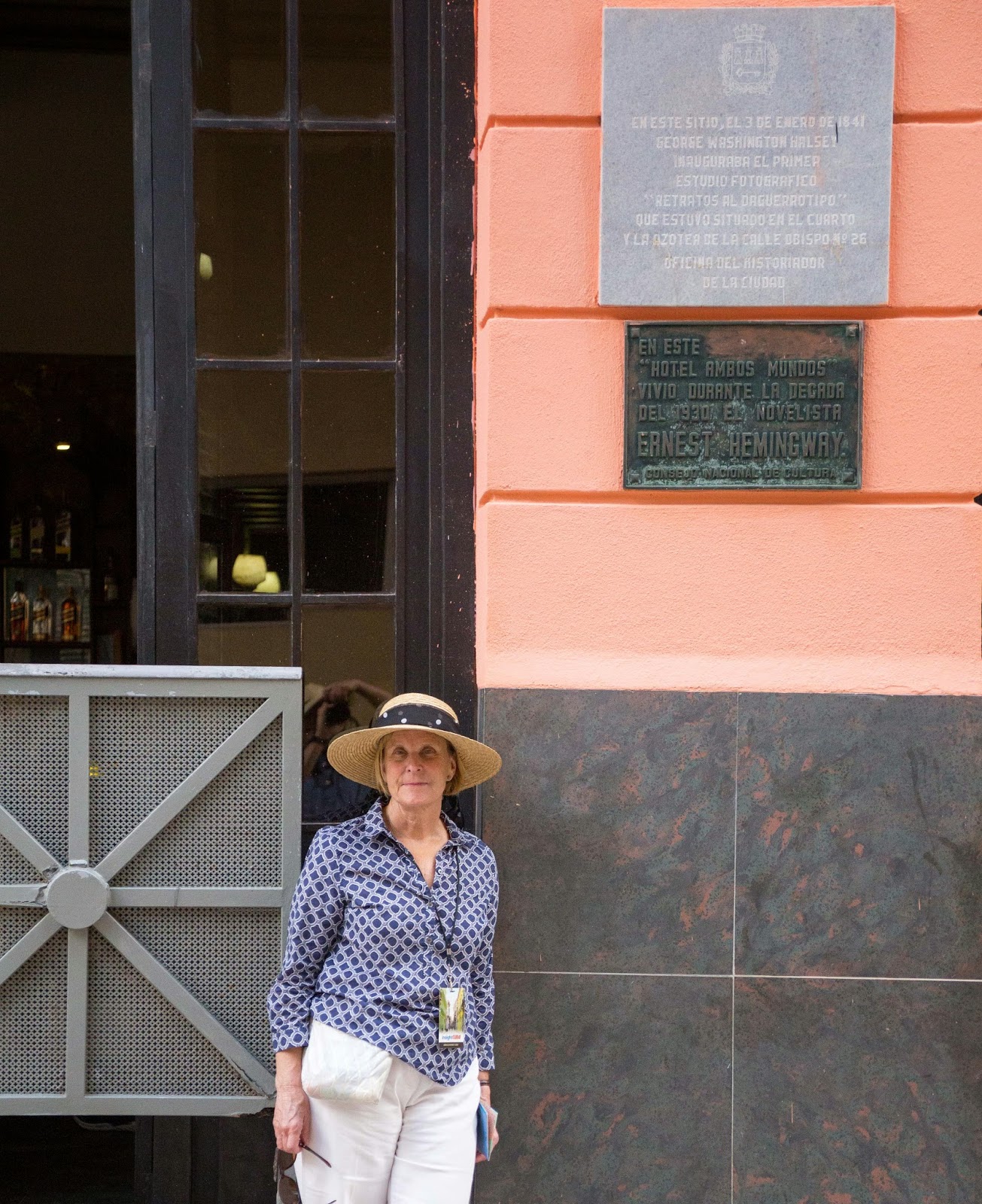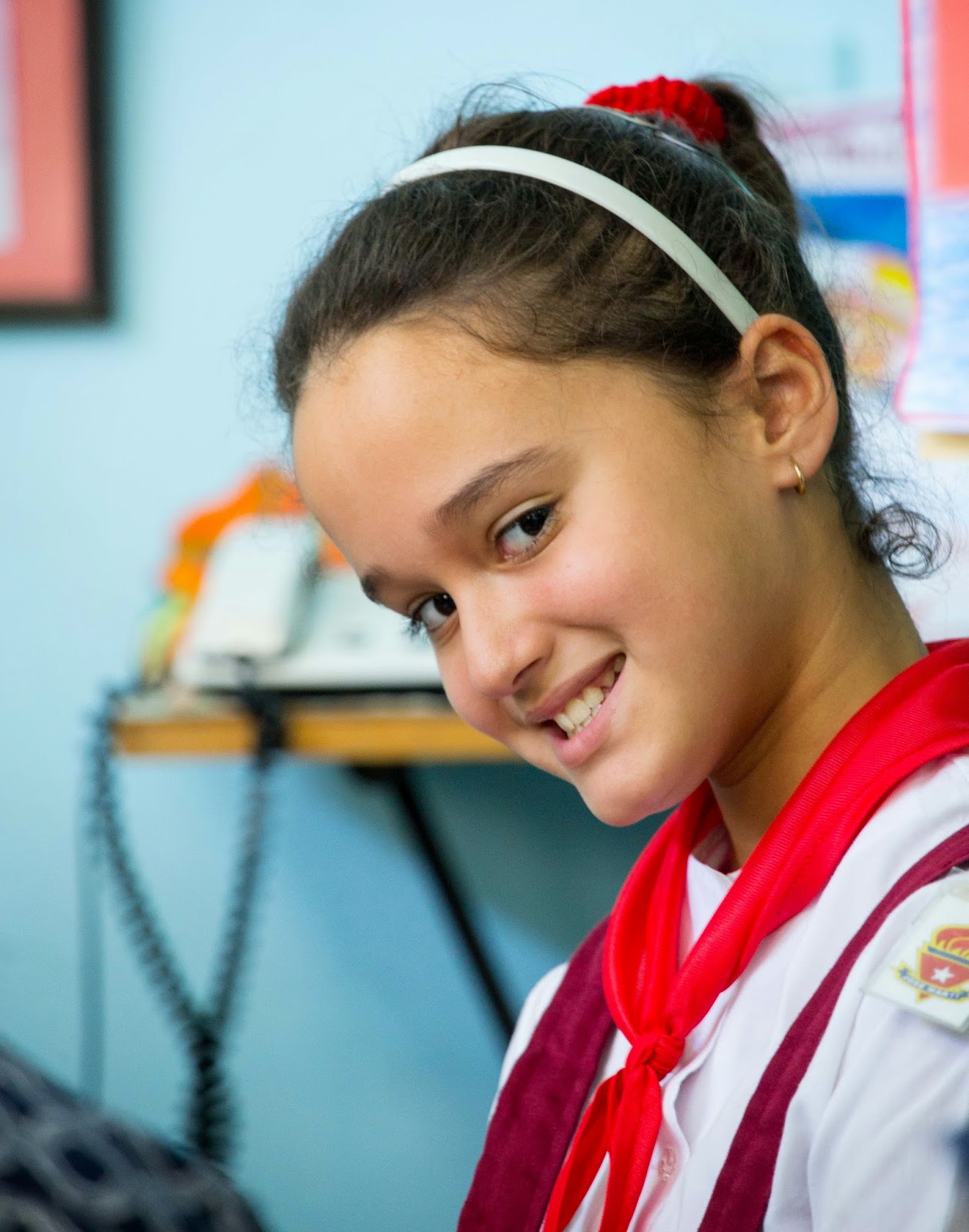We spent the first part of the day in Old Havana, walking to the four main plazas:
[REMINDER #1: Bold Text indicates a link to more information]
[REMINDER #2: Left Click on any picture to see a larger image]
[REMINDER #2: Left Click on any picture to see a larger image]
In Plaza de la Catedral we saw Havana Cathedral (The Cathedral of The Virgin Mary of the Immaculate Conception)…
In the center of Plaza de Armas is a statue of Carlos Manuel de Céspedes, but the square is probably better known for the used-book sellers gather there.
In Plaza de San Francisco we admired the church.
Pam hung out with José María López Lledín.
Before continuing on to Plaza de Vieja we visited La Escuela Taller Gaspar Melchor de Jovellanos, a school that trains students for trades such as masonry, plumbing, iron work, carpentry, etc. Much of the training is done at sites the government is repairing. In a fairly recent development, tradesmen can now also sell their services in the private sector either full-time or on the side to supplement their government salary.
In Plaza Vieja we visited an elementary school. Approaching the school we found some of the students doing physical education in the square.
In Plaza Vieja we visited an elementary school. Approaching the school we found some of the students doing physical education in the square.
Inside the school we had a chance to look around, including the opportunity to peek into some classrooms and see a play area where creative parents had made things out of boxes and other basic materials.
During some free time before lunch, I took the opportunity to buy some Cohibo cigars which I can now legally take back to USA. Cuban cigars having a robust world market, it was depressing how few robusto-size cigars I could buy without exceeding my (and Pam's) import limit.
After lunch at a restaurant at Plaza San Francisco we had free time to just wander around which Pam and I enjoyed, walking along a busy shopping street off Plaza de Armas.
During our meandering we came to Hotel Ambos Mundos, its claim to fame being a former frequent resident.
Returning to the bus, our next destination was Paseo de Marti where we walked along the sidewalk past El Capitolio (the Capital building) and the Gran Teatro de La Habana.
Returning to the bus, our next destination was Paseo de Marti where we walked along the sidewalk past El Capitolio (the Capital building) and the Gran Teatro de La Habana.
Some of the famous vintage cars rolled by us as we walked. Many of the best maintained ones were for hire.
Cuban drivers are famous for their ability to improvise and adapt to keep their aging cars running. We came across one with an engine problem. The driver clearly knew the nature of the problem and was doing the repair…with a machete; a tool I doubt is in the average automobile mechanic’s tool chest.
Next we were off to Central Havana to visit the after-school program Casa del
Niño y la Niña that teaches among other things "children's rights". (I could not find a list specific to Cuba. I did find a United Nations list.)
On the bus ride back to the hotel we passed the University of Havana where Fidel Castro studied law, stopped at the National Hotel to drop off a few of our group, and then passed the US Special Interest Section (USINT) (i.e. the embassy that is currently not an embassy). in front of it was a forest of flagpoles erected by the Cuban government some years ago to hide any signs and banners hung from the building. (For more information on the flagpoles read the “Propogada Battles” section of the link for the the USINT.)
In the evening we had dinner on the roof of the paladar Moneda Cubana near Plaza de la Catedral. After several flights of stairs we found ourselves on the roof. It was raining, but our table was under cover. The rain soon stopped allowing the plastic siding to be raised do that we could look across the rooftops and the harbor.
Just out of site were the two forts that used to guard the harbor entrance. To protect Spanish treasure galleons and other valuable shipments a chain between the two forts was raised and lowered across the neck of the harbor. Today the hilltop fort fires a ceremonial cannon at 9:00 every night.
On the bus ride back to the hotel we passed the University of Havana where Fidel Castro studied law, stopped at the National Hotel to drop off a few of our group, and then passed the US Special Interest Section (USINT) (i.e. the embassy that is currently not an embassy). in front of it was a forest of flagpoles erected by the Cuban government some years ago to hide any signs and banners hung from the building. (For more information on the flagpoles read the “Propogada Battles” section of the link for the the USINT.)
In the evening we had dinner on the roof of the paladar Moneda Cubana near Plaza de la Catedral. After several flights of stairs we found ourselves on the roof. It was raining, but our table was under cover. The rain soon stopped allowing the plastic siding to be raised do that we could look across the rooftops and the harbor.
Just out of site were the two forts that used to guard the harbor entrance. To protect Spanish treasure galleons and other valuable shipments a chain between the two forts was raised and lowered across the neck of the harbor. Today the hilltop fort fires a ceremonial cannon at 9:00 every night.
After dinner the bus dropped some of our group at the hotel, then took the rest of us to the Tropicana to see the legendary floor show begun in 1939. It was quite a two-hour production which Pam & I enjoyed seeing. We did feel it went a bit long with a weak last half-hour and a bland finale. It was interested that included in the price of admission was a bottle of rum per foursome.
Our guide having arranged taxis to take us back to the hotel, our exit and return were quick and efficient.
Our guide having arranged taxis to take us back to the hotel, our exit and return were quick and efficient.
























































No comments:
Post a Comment